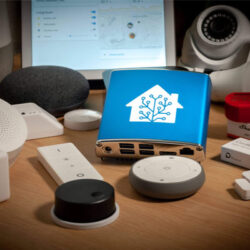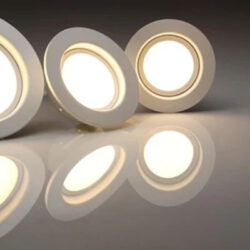Electrical
Cordlesspowertools Canada Online stores have a wide range of Electrical Products that are available in different types and prices. Popular brands like Bosch, Dewalt, Hitachi, Dongcheng, Cumi, KPT, Ferm, Black Decker, Makita, Jon Bhandari, Ken, Metabo, Bullet, Planet Power, Stanley, Maktec, Ralli Wolf, AOG, Falcon, Hit-Min, IDeal, Eastman, Fein, Electrex, Craftsman, AEG, Zogo, Xtra Power, DCA, Yuri have a vast range of models available with different designs and functionalities. You can easily browse through the products, compare them and choose the one that best fits your needs.
Electrical: Essential Components for a Modern Home
Having the right electrical items in your home is critical for maintaining safety, functionality, and convenience. Whether you are setting up a new electrical system or upgrading your current one, choosing high-quality components like electric plug sockets, electrical wires, and home automation devices can enhance your home’s efficiency. In this guide, we’ll explore key electrical products that can ensure smooth operation and make your home smarter and safer.
Home Automation Devices: Smart Technology for Effortless Control
Home automation devices are becoming increasingly popular in modern homes, providing greater control over various electrical systems through automation and smart technology. From controlling lighting to adjusting thermostats, these devices allow you to manage your home efficiently from your smartphone or tablet.
Features of Home Automation Devices:
- Wireless control through smart devices
- Energy-saving technology for reduced power consumption
- Easy integration with other smart home systems
Electric Plug Sockets: Safe and Durable Solutions
Electric plug sockets are a basic yet vital part of any home electrical system. They ensure that your appliances are safely connected to the power supply. Modern plug sockets often come with advanced features like surge protection, USB ports, and child safety shutters, making them both practical and safe for everyday use.
Features of Electric Plug Sockets:
- Surge protection for enhanced safety
- Durable materials for long-lasting use
- Available in different styles to match home décor
Electrical Wires: Reliable Connectivity for All Applications
High-quality electrical wires are essential for safely transmitting power throughout your home. Whether you’re wiring a new home or upgrading existing wiring, using the right gauge and type of wire is crucial for maintaining efficiency and safety.
Features of Electrical Wires:
- Heat-resistant and insulated for safety
- Different gauges for various electrical loads
- Long-lasting and durable construction
Fan Capacitors: Efficient Power for Cooling Solutions
A fan capacitor plays a critical role in ensuring that your ceiling fans run smoothly and efficiently. By regulating the flow of electricity to the fan motor, the capacitor ensures that your fan operates at the desired speed and with minimal power consumption. If your fan is slowing down or making noise, it might be time to replace the fan capacitor.
Features of Fan Capacitors:
- Optimises fan speed and power efficiency
- Long-lasting performance with minimal maintenance
- Compact and easy to install
Connector Wires: Secure and Versatile Electrical Connections
Connector wires are crucial for safely connecting various electrical components. Whether you're working on a DIY project or a professional installation, these wires provide a secure and efficient way to connect power sources to devices. They are commonly used for connecting lighting systems, fans, and other electrical items.
Features of Connector Wires:
- Secure and insulated for safety
- Available in multiple lengths for flexibility
- Easy to install and durable
Conclusion: Power Your Home with Reliable Electrical Items
Investing in high-quality electrical items is essential for maintaining a safe and efficient home. Whether you’re upgrading to smart home automation devices, installing durable electric plug sockets, or ensuring your ceiling fans operate smoothly with fan capacitors, having the right components makes a significant difference. Additionally, reliable electrical wires and connector wires ensure that your home’s electrical system is connected efficiently and securely.
By choosing durable and advanced electrical products, you can enhance both the safety and functionality of your home. Whether you’re looking for smart solutions or basic electrical components, ensure your home’s electrical system is ready for modern living.
Electrical: Essential Components for a Modern Home
Having the right electrical items in your home is critical for maintaining safety, functionality, and convenience. Whether you are setting up a new electrical system or upgrading your current one, choosing high-quality components like electric plug sockets, electrical wires, and home automation devices can enhance your home’s efficiency. In this guide, we’ll explore key electrical products that can ensure smooth operation and make your home smarter and safer.
Home Automation Devices: Smart Technology for Effortless Control
Home automation devices are becoming increasingly popular in modern homes, providing greater control over various electrical systems through automation and smart technology. From controlling lighting to adjusting thermostats, these devices allow you to manage your home efficiently from your smartphone or tablet.
Features of Home Automation Devices:
- Wireless control through smart devices
- Energy-saving technology for reduced power consumption
- Easy integration with other smart home systems
Electric Plug Sockets: Safe and Durable Solutions
Electric plug sockets are a basic yet vital part of any home electrical system. They ensure that your appliances are safely connected to the power supply. Modern plug sockets often come with advanced features like surge protection, USB ports, and child safety shutters, making them both practical and safe for everyday use.
Features of Electric Plug Sockets:
- Surge protection for enhanced safety
- Durable materials for long-lasting use
- Available in different styles to match home décor
Electrical Wires: Reliable Connectivity for All Applications
High-quality electrical wires are essential for safely transmitting power throughout your home. Whether you’re wiring a new home or upgrading existing wiring, using the right gauge and type of wire is crucial for maintaining efficiency and safety.
Features of Electrical Wires:
- Heat-resistant and insulated for safety
- Different gauges for various electrical loads
- Long-lasting and durable construction
Fan Capacitors: Efficient Power for Cooling Solutions
A fan capacitor plays a critical role in ensuring that your ceiling fans run smoothly and efficiently. By regulating the flow of electricity to the fan motor, the capacitor ensures that your fan operates at the desired speed and with minimal power consumption. If your fan is slowing down or making noise, it might be time to replace the fan capacitor.
Features of Fan Capacitors:
- Optimises fan speed and power efficiency
- Long-lasting performance with minimal maintenance
- Compact and easy to install
Connector Wires: Secure and Versatile Electrical Connections
Connector wires are crucial for safely connecting various electrical components. Whether you're working on a DIY project or a professional installation, these wires provide a secure and efficient way to connect power sources to devices. They are commonly used for connecting lighting systems, fans, and other electrical items.
Features of Connector Wires:
- Secure and insulated for safety
- Available in multiple lengths for flexibility
- Easy to install and durable
Conclusion: Power Your Home with Reliable Electrical Items
Investing in high-quality electrical items is essential for maintaining a safe and efficient home. Whether you’re upgrading to smart home automation devices, installing durable electric plug sockets, or ensuring your ceiling fans operate smoothly with fan capacitors, having the right components makes a significant difference. Additionally, reliable electrical wires and connector wires ensure that your home’s electrical system is connected efficiently and securely.
By choosing durable and advanced electrical products, you can enhance both the safety and functionality of your home. Whether you’re looking for smart solutions or basic electrical components, ensure your home’s electrical system is ready for modern living.



